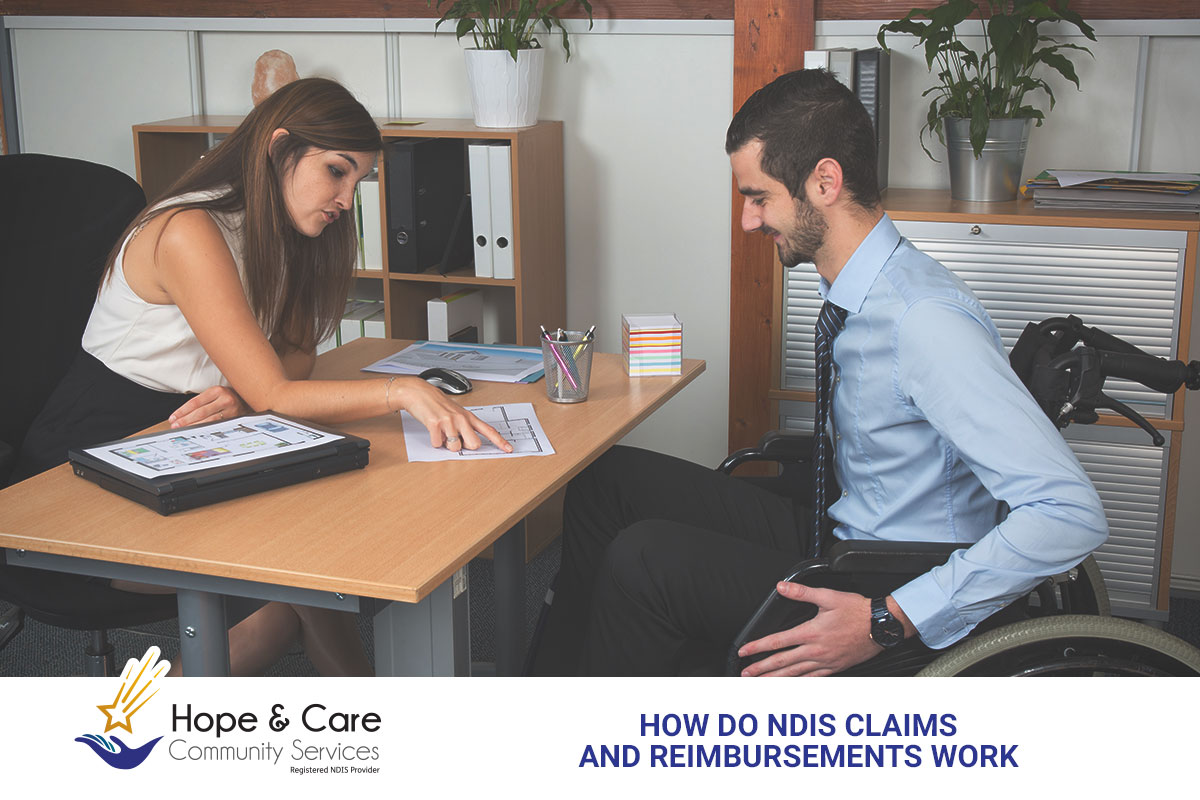
Managing your NDIS plan is about more than choosing the right supports it also involves understanding how to pay for services and claim your funding correctly. Sometimes, you may need to pay out-of-pocket for approved supports before being reimbursed. Knowing how NDIS claims and reimbursements work can help you recover your money quickly and make the most of your funding.
In this guide, we explain what NDIS reimbursements are, how to submit claims, what expenses are covered and how long it usually takes to be paid back.
What Is an NDIS Reimbursement?
An NDIS reimbursement happens when you pay for an approved support or service using your own money and then claim the cost back from your NDIS plan.
For example, you might:
- Buy a non-slip bathmat for safety
- Pay for a taxi using cash from your transport budget
- Purchase a walking stick or portable ramp to support independence
As long as the expense is approved by the National Disability Insurance Agency (NDIA) and your plan has enough funding, you can submit a claim for reimbursement.
How to Make a Claim for NDIS Reimbursements
Making a claim is straightforward. You only need to follow two main steps:
1. Keep a Receipt or Tax Invoice
Always ask for a receipt or invoice that shows the service or item has been paid in full. To meet NDIA requirements, the invoice must include the Australian Business Number (ABN) of the provider or business.
2. Submit Your Claim
You can usually submit your claim through your plan manager’s online portal or via email. Online portals are often quicker, because they let you:
- Upload receipts directly
- Track the status of your claim
- View when payments are released
If you manage your own plan, you can submit claims directly through the myplace portal on the NDIS website.
What Expenses Will the NDIS Cover?
Your NDIS plan outlines what supports you can use and how much funding is available in each budget category. Every plan is different, so it is important to check before making a purchase.
The NDIA will reimburse costs that are considered reasonable and necessary, including supports that:
- Relate directly to your disability
- Help you achieve your NDIS goals
- Represent value for money
- Are safe and effective
The NDIS will not cover expenses considered everyday living costs, such as groceries, rent or entertainment. Because legislation has tightened in recent years, it is best to confirm before making a purchase to avoid rejected claims.
You can always speak with your plan manager, support coordinator or NDIA representative for guidance.
How Long Does an NDIS Reimbursement Take?
The timeframe for reimbursements depends on how quickly the NDIA reviews your claim. Generally:
- Plan managers check that your claim meets all requirements within 48 hours.
- NDIA staff may take up to 10 working days to review, although many claims are processed sooner.
- Once approved, the NDIA releases the funds and your plan manager or the portal processes payment to you.
If you regularly use the same support or service, it is often quicker to have the provider invoice directly to your plan manager instead of paying upfront. This way, you are not out of pocket and claims are processed faster.
Tips for Smoother NDIS Claims and Reimbursements
To avoid delays or rejected claims:
- Always request receipts with the provider’s ABN.
- Keep records organised in case the NDIA requests extra details.
- Confirm that a purchase is reasonable and necessary before paying.
- Use online portals where possible to track claims in real-time.
- Consider having providers invoice directly if the service is ongoing.
Conclusion
Understanding NDIS claims and reimbursements helps you avoid unnecessary stress and keep your funding working for you. If you pay out-of-pocket for an approved support, you can be reimbursed as long as the expense is eligible and your plan has enough funds.
By keeping receipts, submitting claims correctly and knowing what your plan covers, you can manage your NDIS funding with confidence. And whenever possible, arrange for providers to invoice directly to avoid being out of pocket in the first place.
FAQs About NDIS Claims and Reimbursements
It is when you pay for an approved support yourself and then claim the cost back from your NDIS plan.
A paid receipt or tax invoice that includes the provider’s ABN.
Through your plan manager’s portal, by email or directly in the myplace NDIS participant portal if you self-manage.
Usually less than 10 working days once a valid claim is submitted.
Check with your plan manager or NDIA to see if the expense fits the “reasonable and necessary” criteria in your plan.
Want to learn more? Read other articles :
- What types of Supports are funded by the NDIS?
- NDIS Funding for Social and Recreational Activities: A Guide
- Why NDIS Personalised Care Plans Matter in Disability Support
HCCS is a registered NDIS provider. Learn more about our services.
♥ We are available in Brisbane! – Our team is just a call away!
